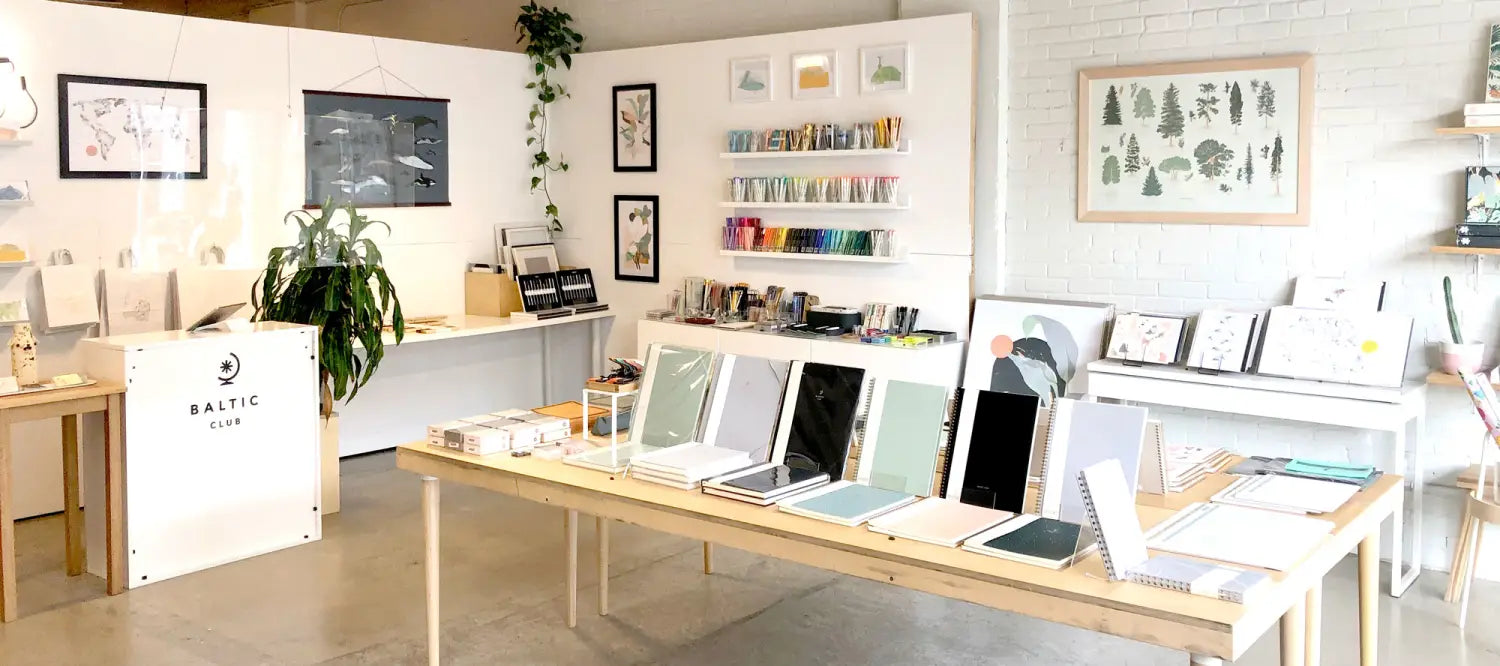Are you longing to see your products prominently displayed on the shelves of real stores? Your dreams can become a reality! We were fortunate enough to showcase some of our products at the prestigious Souk @ Sat, an annual market in Montreal. The positive feedback we received there inspired us to take a leap of faith and introduce our creations to the world of brick-and-mortar retail. That was back in 2016, and now, eight years later, we've expanded to over 500 stores, including numerous major locations. Along the way, we even opened our own brick-and-mortar stores, giving us valuable insights into the entire process.
Allow us to share how we turned our aspirations into reality and the invaluable lessons we learned. It's worth noting that there are various paths you can take to achieve your goal, and we're here to provide expert guidance at every stage.

Step 1: Offer Real, Tangible Products
When you're approaching a store, it's important to show them more than just photos or sketches of your products. Many people make the mistake of relying solely on visual representations, and this can often lead to them being turned away. To make a strong impression, it's crucial to bring your actual products with you. This shows the store owner that you're serious about your business and that you're confident in the quality of your products.
There are a few reasons why it's so essential to bring your actual products with you when you're approaching a store. First, it allows the store owner to see and feel your products for themselves. This is much more effective than simply showing them a photo or sketch. Second, it gives the store owner a chance to ask questions about your products and how they work. This can help them to better understand your products and whether or not they're a good fit for their store. Finally, it shows the store owner that you're willing to put in the extra effort to get your products into their store. This can make a big difference in their decision-making process.
If you're serious about getting your products into stores, it's important to make sure that you're prepared to bring them with you when you make your pitch. This will show the store owner that you're serious about your business and that you're confident in the quality of your products. It will also give them a chance to see and feel your products for themselves, which can make a big difference in their decision-making process.
Here are a few tips for bringing your products to a store:
- Make sure your products are clean and well-packaged.
- Bring enough products to show the store owner a good variety.
- Be prepared to answer questions about your products and how they work.
- Be confident and enthusiastic about your products.

Step 2: Target the Right Stores
When you're first starting out, it's important to target the right stores. This means finding stores that are a good fit for your product and your brand. Here are a few things to keep in mind when targeting stores:
- Your product: Make sure the store sells products that are similar to yours. You don't want to be the only one selling a product that no one else wants.
- Your brand: Make sure the store's brand aligns with your own. You don't want to be selling your products in a store that has a completely different vibe than your brand.
- The store's location: Make sure the store is located in a place where your target customers are likely to shop.
Once you've identified a few potential stores, it's time to start reaching out. Here are a few tips for approaching stores:
- Do your research: Before you reach out to any stores, make sure you do your research. Learn as much as you can about the store, its owner, and its customers.
- Be prepared to answer questions: When you reach out to stores, be prepared to answer questions about your product, your brand, and your sales goals.
- Be professional: When you're communicating with stores, be sure to be professional and polite. Remember, you're trying to make a good impression.
If you follow these tips, you'll be well on your way to targeting the right stores for your product.
Here are some additional tips for targeting the right stores:
- Look for stores that are expanding or remodeling. These stores are more likely to be looking for new products to add to their shelves.
- Attend trade shows and industry events. This is a great way to meet store owners and learn about their needs.
- Use social media to connect with store owners. Follow them on social media and interact with them on a regular basis.

Step 3: Be Professional and Personable
To ensure a successful collaboration, be crystal clear about your stock, pricing, refill policies, and return policies.
- Stock: Make sure you have enough stock to meet the demand of the store. You don't want to run out of products and disappoint customers.
- Pricing: Make sure your prices are competitive with other stores that sell similar products. You don't want to be too expensive and lose sales, but you also don't want to be too cheap and make it seem like your products are low quality.
- Refill policies: Make sure you have a clear policy on how customers can refill their products. Do you offer discounts for refills? Do you require customers to bring back their empty bottles?
- Return policies: Make sure you have a clear policy on how customers can return products. Do you offer refunds? Do you offer exchanges?
It's essential to have a well-written contract signed before any transactions take place.
A contract is a legally binding document that outlines the terms of your collaboration with the store. It should include things like the price of your products, the quantity of products you're providing, the length of the collaboration, and the payment terms.
We learned the hard way that a poorly written contract can lead to failure.
In the past, we've had problems with stores not paying us on time or not fulfilling their obligations under the contract. This has caused us a lot of stress and financial hardship.
In the near future, we'll share a post explaining the different types of arrangements you can have with stores and how to establish an efficient follow-up system.
We'll also share some tips on how to avoid common problems that can arise when collaborating with stores.
Make an effort to visit your chosen stores regularly, not just to promote your products, but also to establish a genuine connection.
When you visit stores, take the time to talk to the store owners and employees. Get to know them and learn about their business. This will help you build a strong relationship with them and make it more likely that they'll be successful in selling your products.
Avoid pushing store owners to rearrange their displays according to your preferences, as they have a better understanding of what sells best in their store.
Store owners know their customers better than you do. They know what products sell well in their store and where those products should be displayed. If you try to push them to rearrange their displays according to your preferences, you're likely to make them angry and they may not want to sell your products anymore.
When you build a positive relationship with store owners, increased sales will naturally follow.
Store owners are more likely to promote your products if they like you and trust you. They're also more likely to give you preferential treatment, such as giving you more shelf space or better prices. By building a positive relationship with store owners, you can increase your chances of success.

Step 4: Listen and Learn
Store owners are a valuable source of feedback. They can tell you what their customers are looking for, what they like and don't like about your products, and how you can improve.
Here are a few tips for getting feedback from store owners:
- Ask for their feedback: When you visit stores, be sure to ask the owners and employees for their feedback. Ask them what they think of your products, what they would like to see changed, and how you can improve your sales.
- Listen carefully: When store owners give you feedback, be sure to listen carefully. Don't just nod your head and say "uh-huh." Really listen to what they have to say and take it to heart.
- Take action: Once you've received feedback from store owners, be sure to take action. If they have suggestions for improvement, make the changes. If they have complaints, address them.
By listening to and learning from store owners, you can improve your products and increase your sales.
Embrace the cycle of conceptualizing, building, showcasing, and adapting
The cycle of conceptualizing, building, showcasing, and adapting is a never-ending process. As you learn more about your customers and the market, you'll need to make changes to your products and marketing strategies. Be prepared to adapt and change as needed.
Maintain diligent follow-up
Once you've gotten your products into stores, don't just sit back and relax. You need to maintain diligent follow-up. Visit stores regularly to see how your products are selling. Talk to store owners and employees to get their feedback. And be sure to address any problems or complaints as soon as possible.

We'd love to hear about your journey to getting your products into stores. Share your story with us on social media or by emailing us. We're always looking for inspiration from other entrepreneurs.
Stay connected for more inspiration, creativity, and entrepreneurial tips! We'll continue to share tips and advice on how to get your products into stores. Stay connected with us on social media or by subscribing to our newsletter. We'll send you updates on our latest blog posts and resources.


